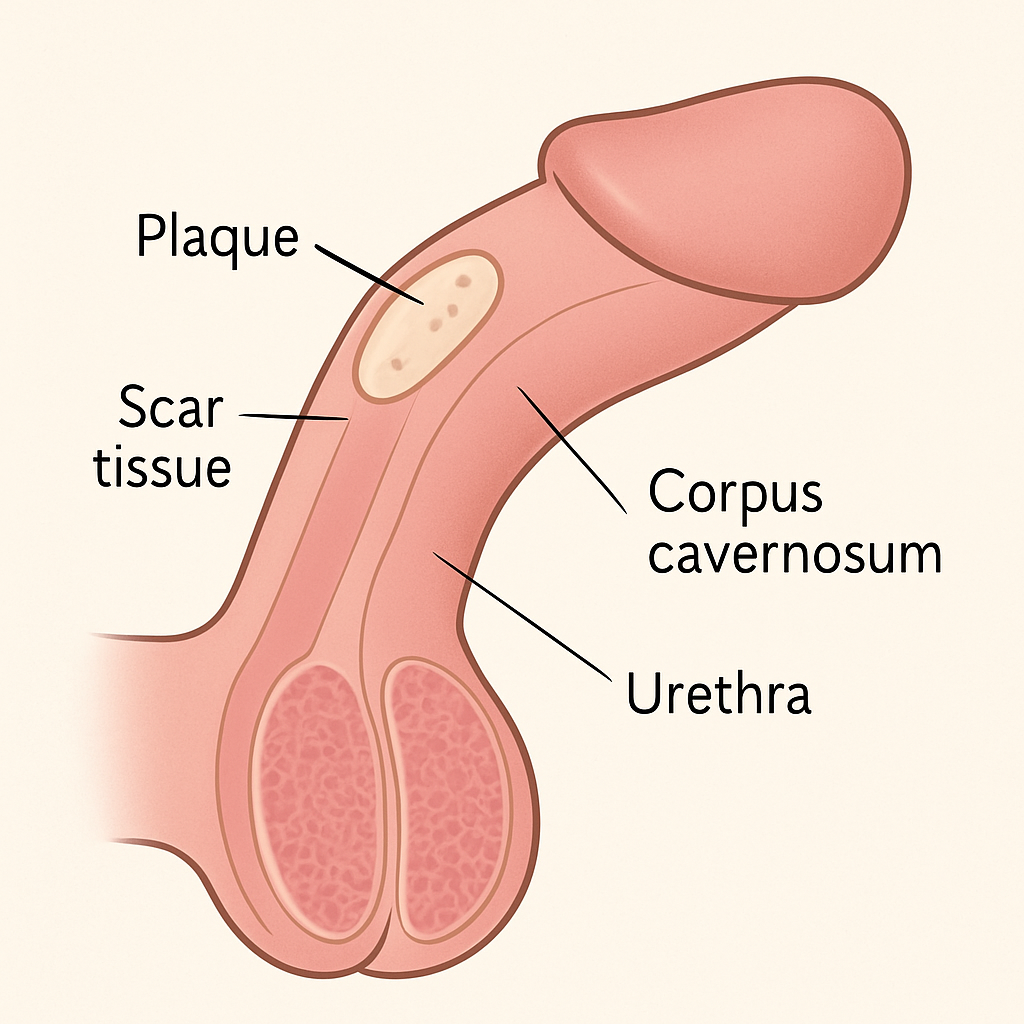Peyronie’s disease is a condition that affects the connective tissue inside the penis, leading to curvature, lumps, or pain during erections. Early recognition is crucial for effective treatment and to prevent complications such as erectile dysfunction or difficulty during sexual activity.
Common Early Symptoms
-
Penile Curvature
One of the first signs is a noticeable bend or curve in the penis when erect. The curvature can develop gradually and may become more pronounced over time. -
Palpable Lumps or Plaques
Small, firm lumps or plaques can form under the skin. These are often found on the top, bottom, or sides of the shaft. -
Pain During Erections
Discomfort or pain during an erection is common in the early stages of Peyronie’s disease. Pain often decreases as the disease stabilises. -
Changes in Erection Quality
Some men notice difficulty achieving or maintaining erections due to tissue changes or curvature.
Why Early Diagnosis Matters
Early consultation with a Urologist allows for monitoring and, if necessary, early treatment options. Treatments may include non-surgical interventions like medication or injections, and in advanced cases, surgery such as the Nesbit procedure or plaque incision and grafting.
Practical Steps
-
Self-examination: Gently feel along the shaft for lumps or plaques.
-
Photographs: If you notice curvature, taking photos can help track changes over time.
-
Seek Professional Advice: Book a consultation with a Urologist experienced in Peyronie’s disease. Early intervention can prevent progression and improve outcomes.
.png?width=319&height=105&name=logo%20(1).png)






LEAVE A REPLY Cancel Reply
Your email address will not be published. Required fields are marked *